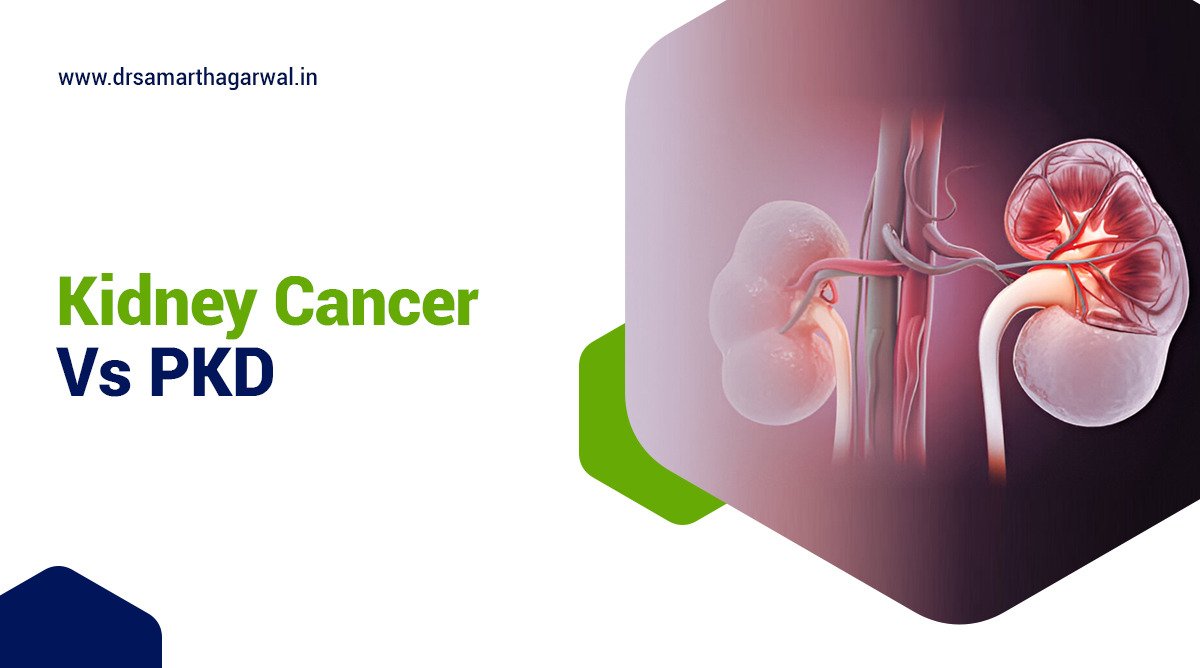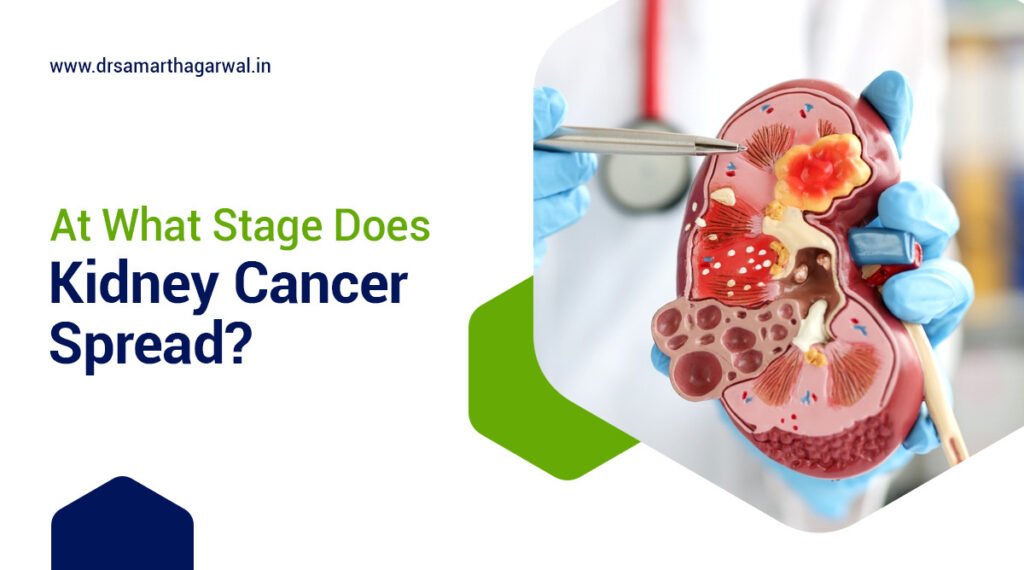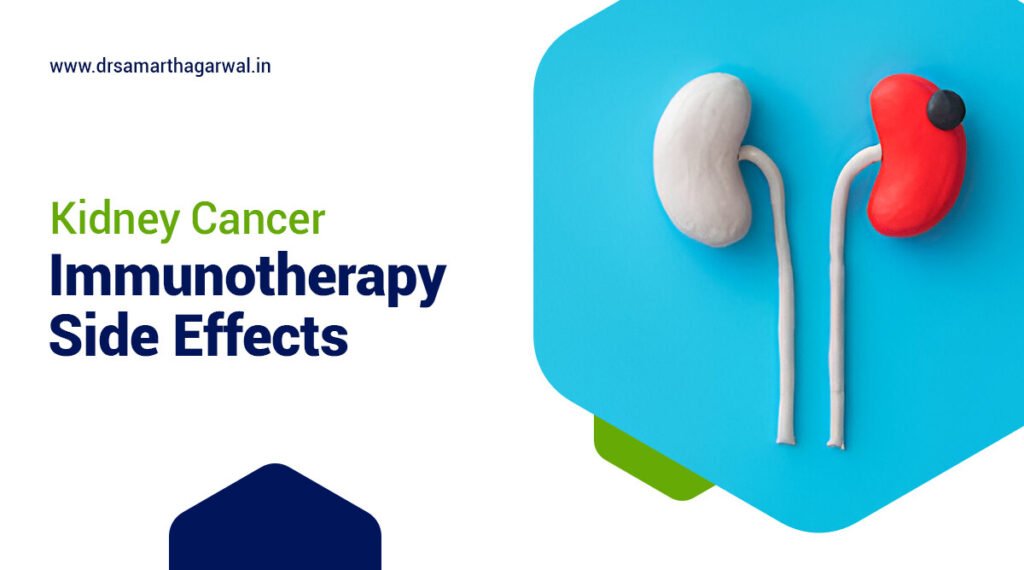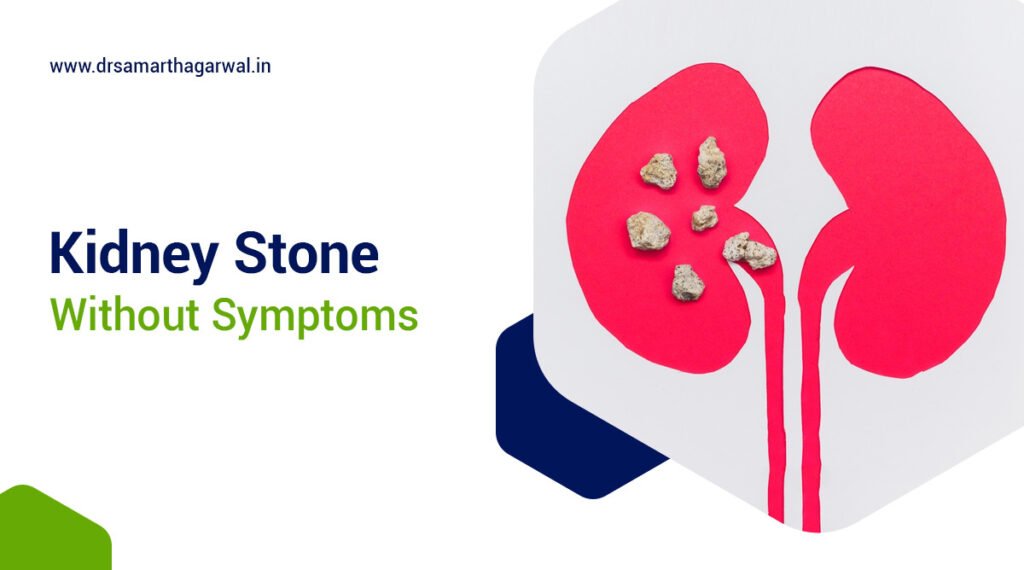Understanding Kidney Cancer and PKD
Understanding the differences between kidney cancer and Polycystic Kidney Disease (PKD) is crucial for accurate diagnosis and treatment. Kidney cancer, characterized by the uncontrolled growth of kidney cells, can manifest with symptoms such as blood in urine, persistent back pain, and unexplained weight loss.
In contrast, PKD is a genetic disorder marked by the formation of numerous cysts in the kidneys, leading to kidney enlargement and potential kidney failure over time. Differentiating between these two conditions is vital, as their management and prognosis differ significantly.
Understanding kidney cancer and PKD involves recognizing that kidney cancer is a malignancy with specific symptoms and treatment protocols, while PKD is a hereditary condition that primarily affects kidney structure and function.
The importance of differentiating between these two lies in their distinct clinical implications, as misdiagnosis can lead to inappropriate treatment strategies. This guide serves to illuminate these differences, ensuring that individuals affected by either condition can pursue the most effective management plans tailored to their specific health needs.
Kidney Cancer vs PKD (Polycystic Kidney Disease)
Kidney cancer and polycystic kidney disease (PKD) are both conditions that affect the kidneys but are fundamentally different in their causes, characteristics, and implications for health. Kidney cancer involves the uncontrolled growth of cells in the kidneys, leading to tumor formation, while PKD is a genetic disorder characterized by the development of numerous cysts in the kidneys.
Understanding the distinctions between these two conditions is crucial for diagnosis, treatment, and management. Below is a comparative table highlighting the key features of kidney cancer and PKD.
| Feature | Kidney Cancer | Polycystic Kidney Disease (PKD) |
| Definition | A disease that starts in the kidneys when healthy cells grow uncontrollably to form tumors. | An inherited disorder where clusters of noncancerous cysts develop in the kidneys, leading to enlargement and loss of function over time. |
| Cause | The exact cause of kidney cancer is unknown, but factors such as age, smoking, obesity, and family history increase risk. | PKD is caused by genetic mutations, inherited from one or both parents, resulting in cyst formation. |
| Types | Includes renal cell carcinoma, clear cell renal cell carcinoma, and less common types like papillary and translocation renal cell carcinoma. | Two main types: Autosomal dominant PKD (ADPKD) and Autosomal recessive PKD (ARPKD). |
| Symptoms | Early stages often have no symptoms; may include blood in urine, lower back pain, unexplained weight loss, and fever as the tumor grows. | Symptoms can include high blood pressure, back or side pain, hematuria (blood in urine), and abdominal fullness due to enlarged kidneys. |
| Diagnosis | Involves imaging tests (CT, MRI, ultrasound) and blood/urine tests; biopsy may be used in some cases. | Diagnosed primarily through ultrasound; may also use CT or MRI and genetic testing when necessary. |
| Treatment | Commonly treated through surgery (partial or radical nephrectomy); may include immunotherapy or targeted therapies for advanced cases. | Management includes controlling symptoms and complications; no cure exists; may require dialysis or kidney transplant in advanced stages. |
| Prognosis | Varies by stage; earlier stages have better outcomes; 5-year survival rates decrease significantly with advanced stages. | Prognosis varies; about 50% of individuals will experience kidney failure by age 60. |
| Complications | Risks include kidney failure, local tumor spread, and metastasis to other organs. | Can lead to hypertension, kidney failure, cysts in other organs, and complications during pregnancy. |
Basics of Kidney Cancer
Understanding kidney cancer is crucial to differentiating it from PKD. Let’s delve into the basics of kidney cancer to gain a comprehensive understanding.
What is Kidney Cancer?
Kidney cancer, also known as renal cancer, is a type of cancer that originates in the kidneys. It occurs when abnormal cells grow and multiply uncontrollably, forming a tumor. Kidney cancer can be life-threatening if left untreated, making early detection and treatment essential.
Kidney cancer is defined as a malignant tumor that develops in the kidney’s lining or parenchyma. There are several types of kidney cancer, each with distinct characteristics and treatment options. Understanding the definition and overview of kidney cancer helps in identifying its differences from PKD.
Types of Kidney Cancer
There are several types of kidney cancer, including renal cell carcinoma, transitional cell carcinoma, and Wilms tumor. Each type has unique features, growth patterns, and treatment approaches. Recognizing the different types of kidney cancer is vital in developing effective treatment plans.
- Renal Cell Carcinoma: The most common type of kidney cancer, accounting for about 85% of cases.
- Transitional Cell Carcinoma: A type of kidney cancer that develops in the renal pelvis or ureter.
- Wilms Tumor: A rare type of kidney cancer that typically affects children under the age of 5.
- Clear Cell Sarcoma: A rare and aggressive type of kidney cancer.
- Papillary Renal Cell Carcinoma: A type of kidney cancer that develops in the renal cortex.
- Chromophobe Renal Cell Carcinoma: A rare type of kidney cancer that develops in the renal cortex.
- Collecting Duct Carcinoma: A rare type of kidney cancer that develops in the collecting ducts of the kidney
Causes and Risk Factors of Kidney Cancer
Kidney cancer can be caused by genetic mutations, environmental factors, and lifestyle choices. Risk factors include smoking, obesity, high blood pressure, and family history. Understanding the causes and risk factors of kidney cancer can help in prevention and early detection.
Symptoms of Kidney Cancer
Symptoms of kidney cancer may include blood in the urine, abdominal pain, and a lump in the abdomen. However, many cases of kidney cancer are asymptomatic, making regular check-ups crucial for early detection.
Recognizing the symptoms of kidney cancer can lead to prompt medical attention and effective treatment.
- Blood in the Urine (Hematuria): Visible or microscopic blood in the urine.
- Abdominal Pain: Pain or discomfort in the side or back, below the ribs.
- Lump in the Abdomen: A palpable mass or lump in the abdomen.
- Weight Loss: Unintentional weight loss due to decreased appetite or metabolic changes.
- Fatigue: Feeling tired or weak due to anemia or other factors.
- High Blood Pressure: Elevated blood pressure due to kidney dysfunction.
- Swollen Veins: Enlarged veins in the abdomen or scrotum.
- Anemia: Low red blood cell count due to bleeding or kidney dysfunction.
- Fever: Recurring fever due to infection or inflammation.
- Loss of Appetite: Decreased appetite due to cancer-related metabolic changes.
Basics of Polycystic Kidney Disease (PKD)
Understanding PKD is essential to differentiating it from kidney cancer. Let’s delve into the basics of PKD to gain a comprehensive understanding.
What is PKD?
PKD is a genetic disorder characterized by the growth of numerous cysts on the kidneys, leading to kidney damage and impaired function. It’s a distinct condition from kidney cancer, with different causes, symptoms, and treatment approaches. PKD is defined as a hereditary disorder causing cystic dilatations of the renal tubules, leading to kidney enlargement and dysfunction. It’s a chronic condition requiring ongoing management to prevent complications.
Types of PKD
Polycystic Kidney Disease (PKD) is a genetic disorder that affects the kidneys, causing cysts to form and leading to kidney damage. There are two main types of PKD, each with distinct characteristics and effects on the body.
Here are the two main types of PKD:
- Autosomal Dominant PKD (ADPKD)
- Most common form of PKD
- Typically diagnosed in adulthood
- Caused by a mutation in one of the PKD genes (PKD1 or PKD2)
- Most common form of PKD
- Autosomal Recessive PKD (ARPKD)
- Rare and severe form of PKD
- Often diagnosed in childhood
- Rare and severe form of PKD
Causes and Risk Factors of PKD
PKD is caused by genetic mutations, with family history being a significant risk factor. Other risk factors include age, hypertension, and kidney damage.
Symptoms of PKD
Polycystic Kidney Disease (PKD) can cause a range of symptoms, some of which may be severe and impact daily life. While some people with PKD may not experience any symptoms until the disease is advanced, others may exhibit noticeable signs. Here are some common symptoms of PKD:
- Abdominal Pain: Pain or discomfort in the abdomen, back, or sides
- Blood in the Urine (Hematuria): Visible or microscopic blood in the urine
- Kidney Stones: Small, hard mineral deposits that can cause pain and bleeding
- High Blood Pressure: Elevated blood pressure due to kidney damage
- Frequent Urination: Needing to urinate more often due to kidney dysfunction
- Painful Urination: Discomfort or pain while urinating
- Swollen Abdomen: Enlarged abdomen due to cyst growth
- Fatigue: Feeling tired or weak due to kidney dysfunction
- Nausea and Vomiting: Feeling queasy or vomiting due to kidney damage
- Recurring Urinary Tract Infections: Frequent infections due to kidney damage
Diagnosis and Evaluation
The diagnosis and evaluation of kidney cancer and Polycystic Kidney Disease (PKD) are critical for effective treatment and management. Both conditions present unique challenges in diagnosis due to overlapping symptoms, but they require distinct approaches. Understanding the diagnostic methods for each condition is essential for differentiating between them and ensuring appropriate care. This discussion will explore the diagnostic methods for kidney cancer and PKD, as well as compare their approaches to highlight the differences in evaluation.
Diagnostic Methods for Kidney Cancer
The diagnosis of kidney cancer typically begins with a thorough medical history and physical examination, followed by imaging studies such as ultrasound, CT scans, or MRI to visualize the kidneys and detect any tumors. A biopsy may be performed to confirm the presence of cancerous cells. Blood tests, including kidney function tests and tumor markers, can also aid in the diagnosis and staging of the disease.
Diagnostic Methods for PKD
In contrast, the diagnosis of PKD often relies on imaging techniques such as ultrasound or CT scans to identify the presence of cysts in the kidneys. Genetic testing may also be utilized, especially in cases where there is a family history of the disease, to confirm the diagnosis of autosomal dominant or recessive PKD. Blood tests can help assess kidney function and monitor for complications associated with the disease.
Comparing Diagnostic Approaches
While both kidney cancer and PKD utilize imaging studies as a primary diagnostic tool, the focus differs significantly. Kidney cancer diagnostics emphasize identifying tumors and assessing their characteristics, whereas PKD diagnostics concentrate on detecting cyst formation and evaluating kidney size and function. Understanding these differences is crucial for healthcare providers to ensure accurate diagnosis and appropriate treatment plans for patients presenting with renal symptoms.
Treatment Options
When considering treatment options for kidney cancer and Polycystic Kidney Disease (PKD), it is essential to recognize that these two conditions require fundamentally different approaches due to their distinct nature and progression. Kidney cancer, a malignant condition, often necessitates aggressive treatment strategies, while PKD, a genetic disorder, focuses on managing symptoms and preserving kidney function. Understanding the treatment modalities for each condition is crucial for patients and healthcare providers to ensure effective management and improve quality of life.
Treating Kidney Cancer
The treatment of kidney cancer typically involves a combination of surgery, targeted therapy, immunotherapy, and sometimes radiation therapy. Surgical options may include partial or radical nephrectomy, depending on the tumor’s size and location. Targeted therapies aim to inhibit specific pathways that cancer cells use to grow, while immunotherapy harnesses the body’s immune system to fight cancer. The choice of treatment depends on the cancer stage, the patient’s overall health, and individual preferences.
Treating PKD
In contrast, the treatment of PKD primarily focuses on managing symptoms and preventing complications rather than curing the disease. This may include controlling high blood pressure, managing pain, and addressing urinary tract infections. In advanced cases, when kidney function declines significantly, patients may require dialysis or kidney transplantation. Regular monitoring of kidney function and lifestyle modifications, such as maintaining a healthy diet and staying hydrated, are also essential components of managing PKD.
Comparing Treatment Modalities: The key difference in treatment modalities between kidney cancer and PKD lies in their objectives. Kidney cancer treatments aim to eradicate cancer and prevent its spread, often involving aggressive interventions. In contrast, PKD treatments prioritize symptom management and preserving kidney function over time. Understanding these differences is vital for patients to navigate their treatment options effectively and for healthcare providers to tailor their approaches based on the specific needs of each condition.
Prognosis and Survival Rates for Kidney Cancer
Kidney cancer survival rates have significantly improved over the past 50 years, with 5-year survival rates tripling for men and doubling for women.
According to Tichanek, Filip et al.’s 2023 study ‘Survival in Kidney and Bladder Cancers in Four Nordic Countries through a Half Century’, the study analyzed survival rates for kidney and bladder cancers in Denmark, Finland, Norway, and Sweden between 1971 and 2020. The study found that 5-year survival rates for kidney cancer improved by over 40% during the study period, with 5-year survival rates for men reaching 79.0% in Sweden and 80.0% for women in Norway in 2016-2020.
Prognosis and survival rates for kidney cancer vary significantly based on the stage of the disease.
According to Kalra, Sarathi et al.’s 2016 study ‘Prognosis of patients with metastatic renal cell carcinoma and pancreatic metastases’, the 5-year survival rate for patients with kidney cancer confined to the kidney is approximately 95%. However, metastases are known to occur in approximately 30% of cases, which confers a 5-year survival rate ranging from 0% to 20% for patients with metastatic disease.
Prognosis and Survival Rates for PKD
Patients with autosomal dominant polycystic kidney disease (ADPKD) who undergo renal replacement therapy, such as hemodialysis or transplantation, have a higher survival rate compared to those with other causes of end-stage renal disease.
According to Mendelssohn, D. C. et al.’s 1988 study, “Management of end-stage autosomal dominant polycystic kidney disease with hemodialysis and transplantation,” a 10-year study of 35 patients with ADPKD at Toronto Western Hospital found that the one- and five-year actuarial survival rates for patients exclusively managed with hemodialysis were 93% and 77%, respectively.
Additionally, the study found that the one- and five-year patient survival rates for those who underwent renal transplantation were 92% and 73%, respectively. The study suggested that transplantation should be considered the treatment of choice for end-stage ADPKD, as it offers the highest quality of life amongst available modalities.
And according to Subramanian, Surabhi et al.’s 2024 StatPearls publication, autosomal recessive polycystic kidney disease (ARPKD) is a rare genetic disorder affecting kidneys and livers, with about half of patients developing end-stage renal failure requiring dialysis or transplantation within the first two decades of life.
Survival rates for ARPKD are estimated at 85% and 82% for individuals surviving the perinatal period at 1 and 10 years, respectively.
FAQ
What percentage of kidney cysts are cancerous?
It is rare for a simple kidney cyst to be cancerous. However, complex cysts, those that are bigger and have certain features, have a higher chance of being cancerous. About 33-84% of complex cysts are malignant, meaning cancerous.
Is kidney cancer usually terminal?
Kidney cancer is not usually terminal, especially in early stages. The 5-year survival rate for stage 1 kidney cancer is almost 90%, and for stage 2 kidney cancer it is around 75%. Advanced kidney cancer can be more challenging to treat, but treatments can often control the cancer and relieve symptoms.
Where is the first place kidney cancer spreads to?
Kidney cancer most often spreads to the lungs, but it can also go to the bones, brain, liver, ovaries, and testicles.

Contact Dr. Samarth Agarwal if you have any questions or concerns about your Urinary health!








